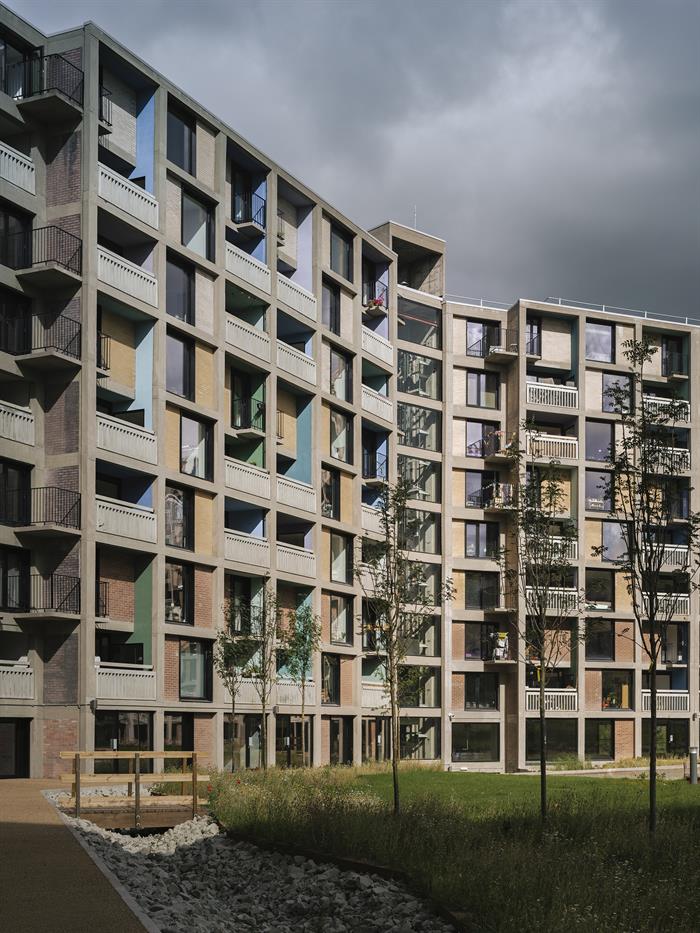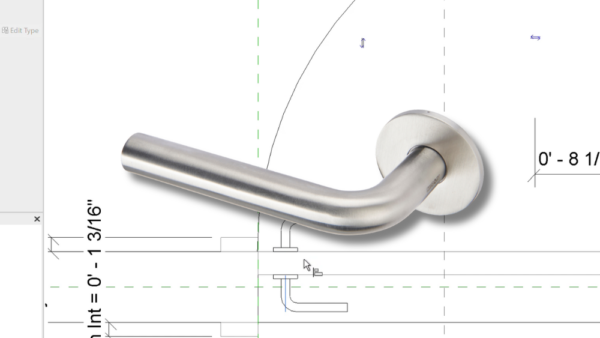
A London Underground line, national art gallery, Council-led housing, inclusive rural retreat and two major regeneration projects have been recognised by the Royal Institute of British Architects (RIBA), forming the shortlist for the 2024 RIBA Stirling Prize.
The six projects in the running for the UK’s highest accolade in architecture, are:
Chowdhury Walk, London by Al-Jawad Pike
Built on a plot previously occupied by garages and ad-hoc parking, these 11 homes – of which seven are social rented – herald the development of a new generation of ambitious council housing in Hackney, East London. A sculptural form gives a strong, confident presence to the staggered two-story terrace that weaves along a newly created public thoroughfare for pedestrians and cyclists. Clever sequencing creates a meaningful route through the development and provides privacy from overlooking neighbours, while also supporting passive solar gain.
The Elizabeth Line, London Underground by Grimshaw, Maynard, Equation and AtkinsRéalis
A mammoth feat of construction and collaboration, The Elizabeth Line creates a familiar yet significantly improved experience for the 200 million passengers it is expected to carry each year. A slick line-wide identity manifests at platform level though the application of consistent cladding, lighting, and signage, creating a decluttered and accessible environment. The result is a major infrastructure project that sets a new standard for inner-city transport.
King’s Cross Masterplan, London by Allies and Morrison and Porphyrios Associates
Twenty years in the making, the redevelopment of King’s Cross is the result of remarkable reintegration and regeneration of this former industrial wasteland in the heart of London. New streets, squares, offices, schools, university facilities and accommodation sit alongside thoughtfully restored historic structures, transforming the area into a thriving hub of activity. Further celebrating the site’s industrial legacy, the architects have reopened the Regent’s Canal to the public and created an ‘urban beach’ – a vibrant, valuable addition to London’s public realm and another clever thread in stitching a previously cut-off part of the city back into the wider urban fabric.
National Portrait Gallery, London by Jamie Fobert Architects and Purcell
A seamless blend of contemporary design and conservation of historical elements reinvigorate this Grade I* listed cultural institution. Visitor experience is enhanced by a welcoming new entrance of bronze doors featuring hand-drawn portraits by Tracey Emin, along with a light-filled learning centre and accessible public space carved from former offices. The entrance reorientates the gallery towards the bustling West End on which its back was previously turned, while crucial accessibility alterations have opened the building to all, including an entrance ramp and wider doorways. Careful interventions, such as using original windows to form new doorways, exemplify a harmony between heritage and adaptability.

Park Hill Phase 2, Sheffield by Mikhail Riches
The second phase of an ongoing regeneration of Europe’s largest listed structure which sits on a prominent hillside overlooking Sheffield City Centre. Internal spaces are modernised through open plan designs and the addition of balconies, while thermal imaging has allowed sustainability experts to identify and improve energy efficiency. A fresh colour palette referencing the nearby Peak District blends with the estate’s original concrete, preserves its design heritage, while tree and wildflower plantings cleverly soften the exterior.
Wraxall Yard, Dorset by Clementine Blakemore Architects
A dilapidated Dorset dairy farm has been sensitively repaired and converted into highly accessible holiday accommodation, with public spaces aimed at boosting engagement with wildlife and farming. Motivated by frustration at the standard of available wheelchair accessible accommodation across the UK, the development offers extensive yet discreet accessible features, providing disabled guests – particularly wheelchair users – with a high degree of independence. Clever landscaping removes the need for ramps and obvious handrails. At the same time, a mix of polished concrete floors and exposed doorframes reduced drag and mitigate bumps for wheelchairs, widening access to this previously inaccessible site.
RIBA President Muyiwa Oki, said: "These projects demonstrate the ingenuity and diversity of architecture today. From major national infrastructure to brave and brilliant council-led housing, these varied schemes are united in making sensitive contributions to elevating everyday life.
Whether raising the bar for social housing, upgrading city transportation or repurposing dilapidated buildings to create heritage-conscious urban and rural developments, each scheme thoughtfully adapts elements of our existing built environment.
At a time when the need to preserve our planet’s resources is greater than ever, these projects are to be commended for placing regeneration and restoration front and centre, transforming well and lesser-known landmarks to create highly sustainable places for future generations.
This is purposeful yet unassuming architecture – architecture that brings joy to people’s lives and strengthens the fabric of our society.”
The winner of the 2024 RIBA Stirling Prize will be announced live at London’s Roundhouse on 16 October 2024, sponsored by Autodesk.








